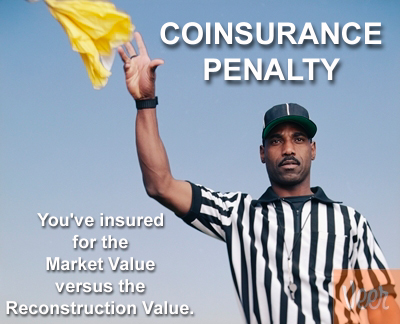 I had the pleasure of meeting a very nice couple a few weeks ago. They called our office to come and take a look at damage from an apartment fire that occurred in one of the multi-family buildings they own in Tucson.
I had the pleasure of meeting a very nice couple a few weeks ago. They called our office to come and take a look at damage from an apartment fire that occurred in one of the multi-family buildings they own in Tucson.
During our initial telephone call, I asked some of the particulars about their insurance policy: the name of their insurance carrier, the amount of coverage they had for the structure, etc. When I got to the question about the square footage of the structure, I felt my breath catch in my chest. They had a multi-unit apartment building that was 5,800 square feet in size with only $160,000 in structural coverage.
I wish I could say this was the first time I have had this type of conversation, but it’s not. In Phoenix, we live in a unique real estate market. Over the past five years or so, people (particularly investors) were able to pick up homes for a fraction of what they would have cost a decade ago.
We all know that part of purchasing a home is getting that investment covered with property insurance. Many people take the insurance that’s offered by their mortgage company – which will cover the amount of the loan. What they don’t realize, though, is that the cost to rebuild the home can, and often is, much more than the market value for the same home.
For instance, with this couple in Tucson, they likely bought insurance to cover the amount they paid for the property. They probably felt that they were covered. However, with reconstruction costs in Arizona ranging anywhere from $95 to $110 per square foot, if their building was a total loss, it would require between $551,00 and $638,000 to hire a contractor to rebuild.
To make matters even more complicated, most property insurance policies have a section under the CONDITIONS that talks about an important little detail called “Coinsurance.” In a nutshell, most insurance carriers require that you have your property insured to at least 80% of the reconstruction value. If the property owner fails to insure for at least 80% of the reconstruction value, the insurance company will slap them with what’s called a “Coinsurance Penalty.” The coinsurance penalty is in direct proportion to the amount you are underinsured.
If you only have your property insured for 70% of the reconstruction value, you could get hit with a 10% coinsurance penalty. If you’re insured to 60% of the reconstruction value, you’d be penalized by a 40% coinsurance penalty. In the case of the couple from Tucson, they were assessed a 33% coinsurance penalty. So, not only were they underinsured to start with, but once the coinsurance penalty was assessed, they were only left with $106,560 in coverage.
It’s fairly easy to determine whether you’re adequately covered. Take the square footage of your property and multiply it by $110/square foot (to be on the safe side). If your structural coverage doesn’t meet or exceed that number, RUN to your insurance agent and ask them to increase your coverage.
The last thing you want to think about in the event of a fire is whether or not you’re adequately covered. It’s way too late by that point and this little detail could be the difference between being able to rebuild with insurance proceeds or having to dig into savings/investments or walking away altogether.

